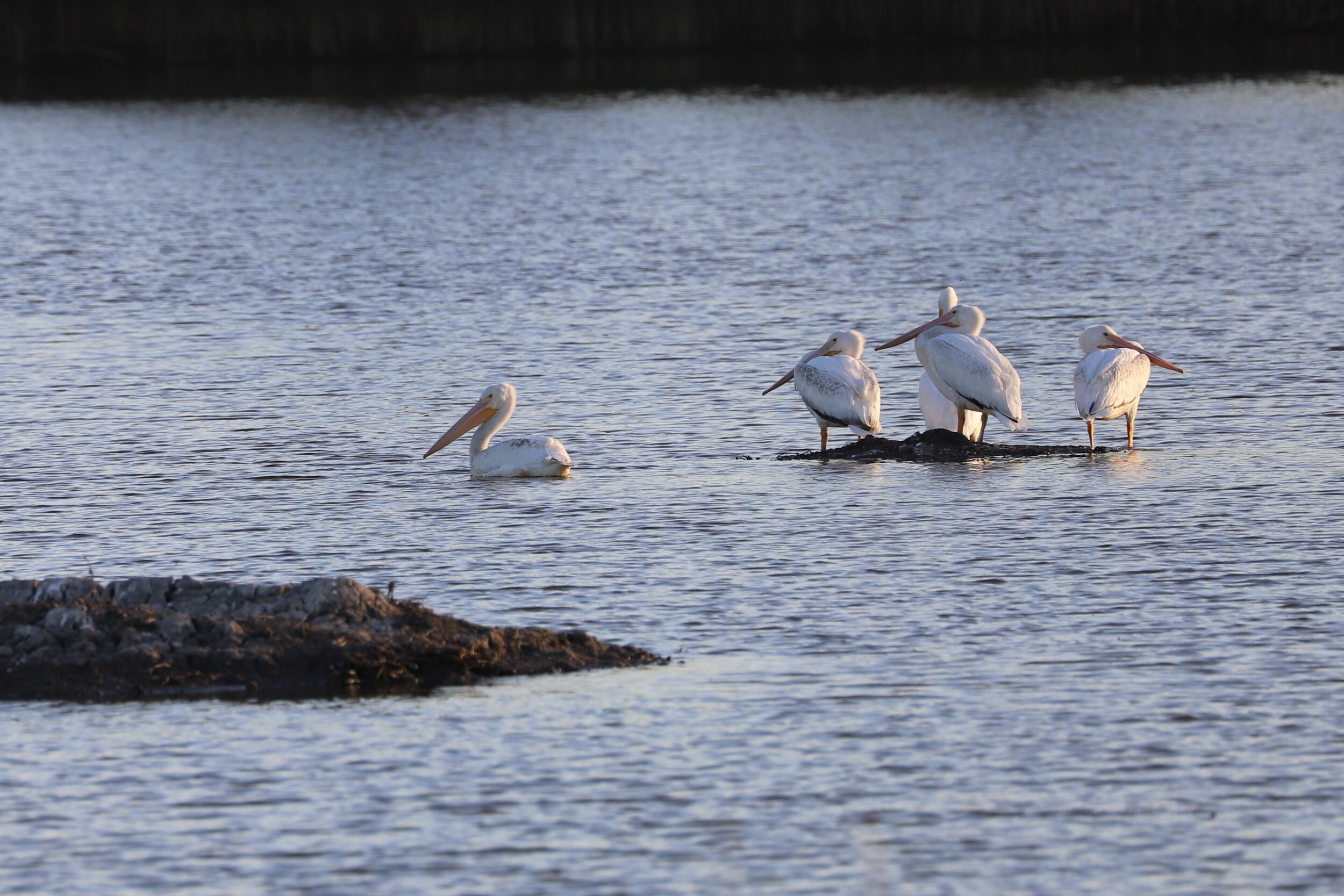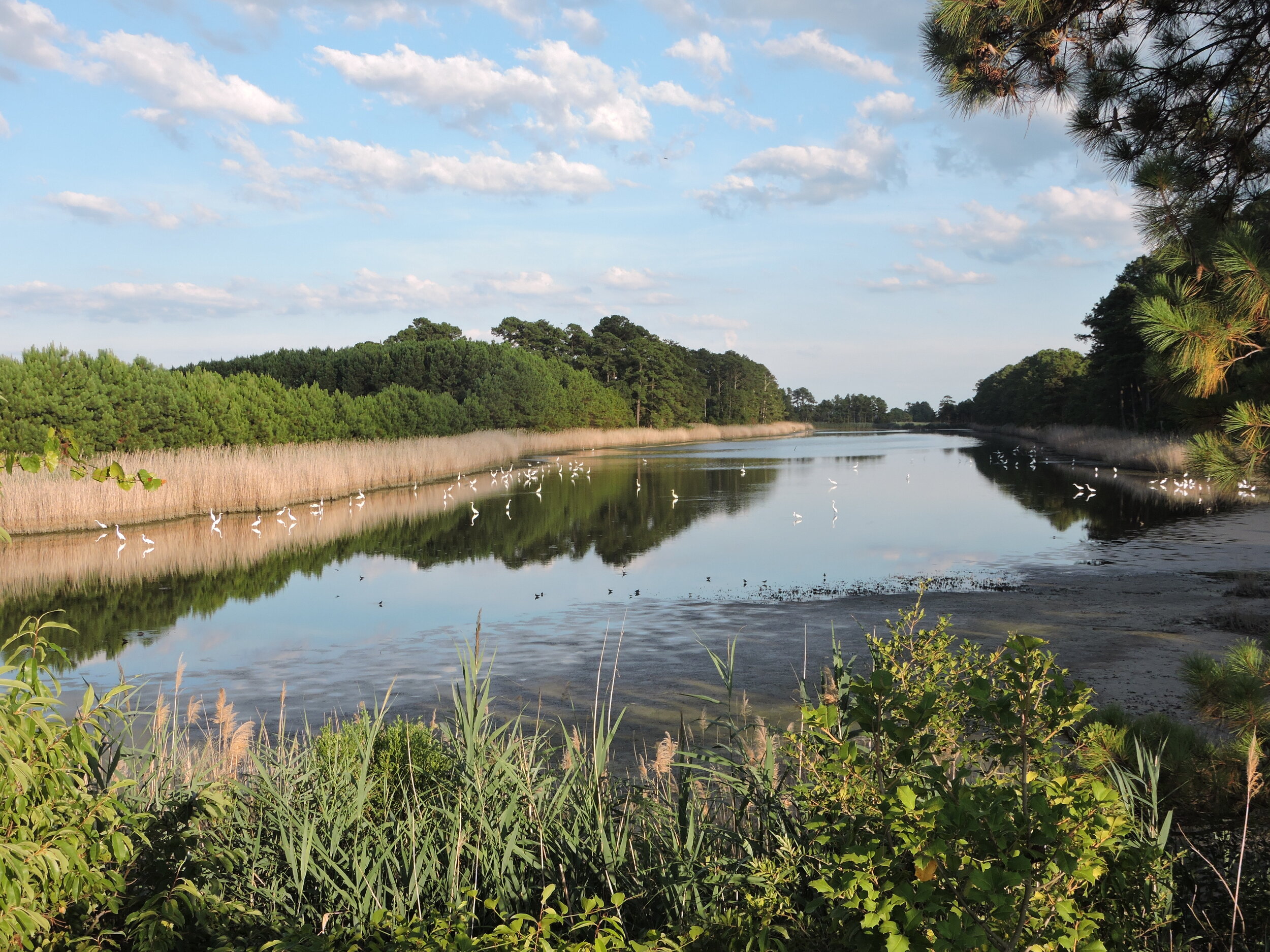Just outside the Town of Claremont, this large wooded lake is primarily birded for waterfowl in the winter months, with the vast majority of eBird lists input between mid-November and early-April. During these months, this pond attracts hundreds of ducks of many species, especially Wood Duck, Gadwall, Mallard, American Wigeon, Ring-necked Duck, and Hooded Merganser. Less frequent visitors include Northern Shoveler, Northern Pintail, Green-winged Teal, Lesser Scaup, Bufflehead, Red-breasted Merganser, and Ruddy Duck. Blue-winged Teal typically turn up for a few weeks in late March into early April. There are also historical records of Eurasian Wigeon from three different years. Canada Geese and Tundra Swans are also regular in winter, and since the early 2000s this lake has been a reliable location for Mute Swans. Other waterbirds frequently encountered here include Pied-billed Grebe, American Coot, Ring-billed Gull, Great Blue Heron, Osprey, Bald Eagle, and Belted Kingfisher.
The southern end of the pond has some marshy areas and mudflats, which should be scanned for Wilson’s Snipe and possibly other species of shorebirds during the appropriate season. Playing for rails is worth a minute’s effort, as the habitat seems appropriate for Virginia Rail or Sora. The surrounding woods are good for the full winter woodland suite, while March and April bring returning White-eyed Vireos, Yellow-throated and Prothonotary Warblers, Northern Parulas, and Summer Tanagers, among others. Swallows often forage over the water; Tree, Barn, and Northern Rough-winged have all been recorded, but Cliff and Bank are possible as migrants. Data from the summer months is essentially nonexistent, but this pond is worth checking in late July and into August when waders begin to disperse. Finally, the brushy foliage and tangles along the edges is worth working in late fall, as it seems ideal for Orange-crowned Warbler, or perhaps a lingering passerine or vagrant.
Accessibility: The pond is private, but easily viewable from public roads. There are vantage points at both the north and south ends; both are worth checking to make sure no birds are missed. View from Beaverdam Road (626) at the south, and Sunken Meadow Road (609) at the north. Both roads have light traffic and wide spots where it is possible to pull off.
eBird Hotspot: Sunken Meadow Pond
—Matt Anthony, March 2021


